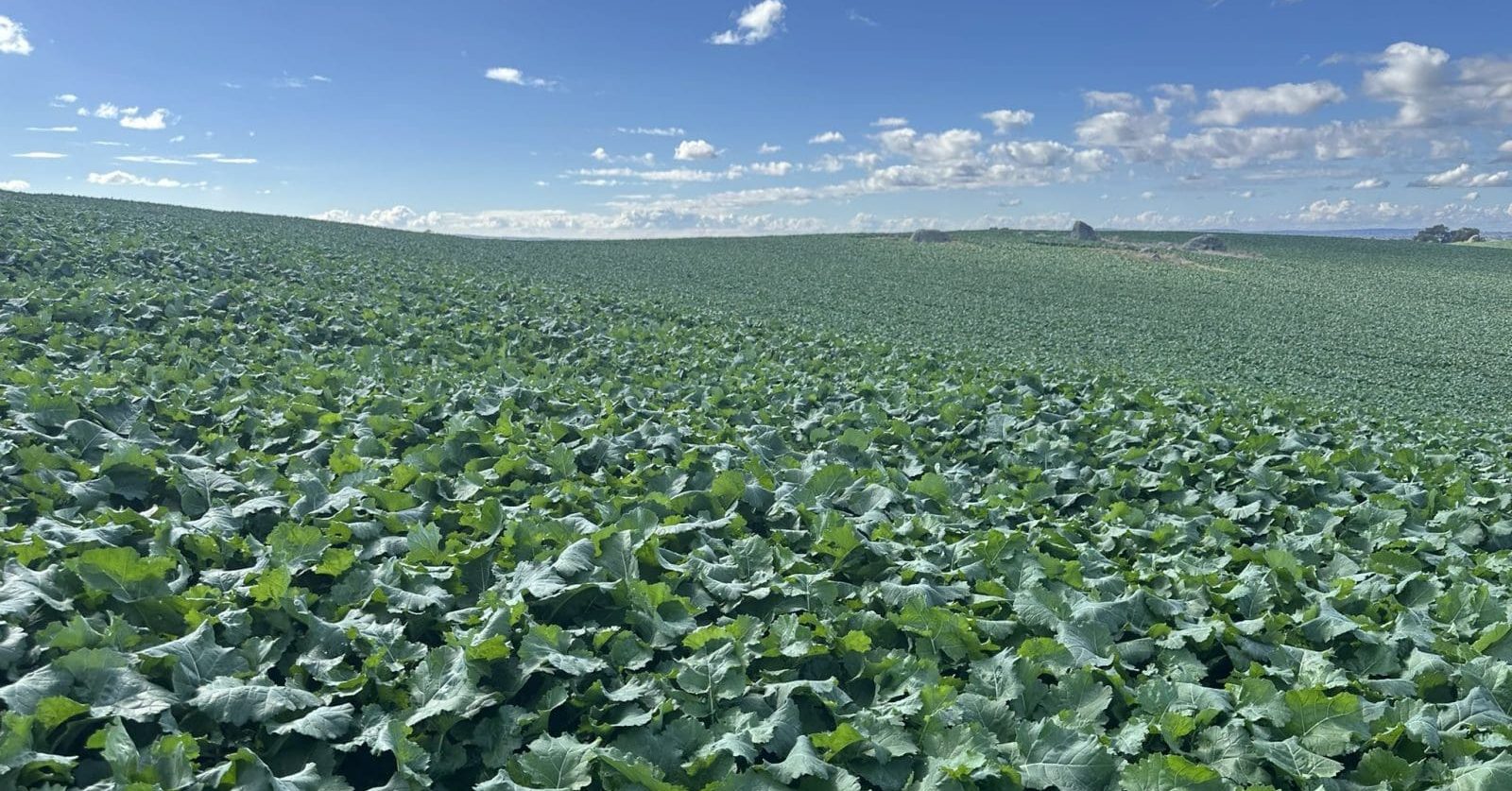
A paddock of Hyola Feast CL canola sown in mid-March and ready for grazing near Young on the south-west slopes of NSW, close to the line that separates an excellent season in the north from a much drier one in the south. Photo: Growmore Agronomy Services
FEED grain volumes sold by growers and traders have increased in the past week to reflect solid export and domestic demand in the rallying world market.
Prompt sales from growers in eastern states have increased now that many are on to wheat as their last crop to sow, and others have finished seeding.
In general, conditions in Queensland and central and northern New South Wales are ideal thanks to recent rain, but parts of Victoria and southern NSW are anxiously awaiting rain to germinate recently sown crops.
South Australia and Western Australia are of particular concern, and very little of both state’s crops in major grain-growing regions has germinated.
However, a June break can still produce above-average yields in all Australian states, as was seen in the bumper year of 2016-17.
As wheat, barley and pulse exports tail off in this back half of the shipping year, domestic demand from graziers and mixed farmers in south-eastern Australia is supporting prices.
On new-crop, growers in eastern states who have had a comfortable start to the season have started to ramp up their new-crop wheat sales at around $405 per tonne for APW.
| Today | May 16 | |
| Barley Downs | $418 | $415 |
| ASW wheat Downs | $420 | $415 |
| Sorghum Downs | $358 | $355 |
| Barley Melbourne | $370 | $355 |
| ASW wheat Melbourne | $380 | $377 |
Table 1: Indicative prices in Australian dollars per tonne.
North sitting pretty
Growers in southern Queensland, and in NSW from the south-west slopes north, are making rapid progress on planting of their winter crop, with many now into wheat.
In northern NSW, and southern Queensland, chickpea planting will start in earnest next week to wrap up the program, and is already under way in central Queensland.
Queensland’s winter crop harvest will start in September, and some feedlots are covered until then.
Broun & Co director Charles Coventry said action in the northern NSW and southern Queensland market had picked up in the past week.
“There’s quite a lot of liquidity and volume going through,” Mr Coventry said.
“It’s mostly wheat; barley’s pretty tight.”
Weather concerns affecting parts of the Northern Hemisphere crop have fuelled the recent rise in world values, and Mr Coventry said some parties were keen to sell current-crop grain ahead of the inverse.
That has narrowed to around $20/t from $35/t earlier this month.
Mr Coventry said the recent rally in global wheat values has sparked an extension of coverage for some consumers.
“Offshore markets have moved pretty aggressively, and some are done out to new crop.”
The rally in wheat and barley values has buoyed interest in sorghum for its relative affordability, and also lupins and faba beans.
“Lupins have gotten a little more scarce due to stronger export demand, and fabas will probably play themselves into rations.”
The flow of new-crop sorghum to bulk export ex Brisbane, and to up-country container packers, has been slow and steady after rain which has made for a drawn-out end to the summer-crop harvest.
Feeding demand lifts in south
A surge in spot buying for livestock in the drier parts of south-eastern Australia has helped to lift southern values this week.
A bigger-than-expected export program for faba beans has largely removed them from grazier and mixed farmer shopping lists, with barley the sought-after product.
“They’re feeding barley, and protein’s pretty tight,” GeoCommodities broker Brad Knight said.
With wintry temperatures and light frost already evident, some graziers are facing a feed gap that is likely to extend into August now that conditions are likely to be too cold to promote prolific crop growth up to late July.
Even in the parts of Victoria where growers have dry sown a lot of their crop, growers are getting towards the end of sowing.
Sowing on farms that have had rain prior to or during sowing is mostly finished, or is expected to wind up by the end of the month when they finish planting wheat and/or kabuli chickpeas.
“In Victoria, we’re getting towards the end.
“Once growers are on to the last commodity, they start to relax a bit, and they’re selling into this market,” Mr Knight said.
“They’re not unloading big tonnes, but they’re providing some liquidity.”
This is expected to continue over coming week as growers collect urea for top-dressing crops, and look to deliver a load of grain to a consumer or export facility to help fund the exercise.
Grain Central: Get our free news straight to your inbox – Click here



HAVE YOUR SAY